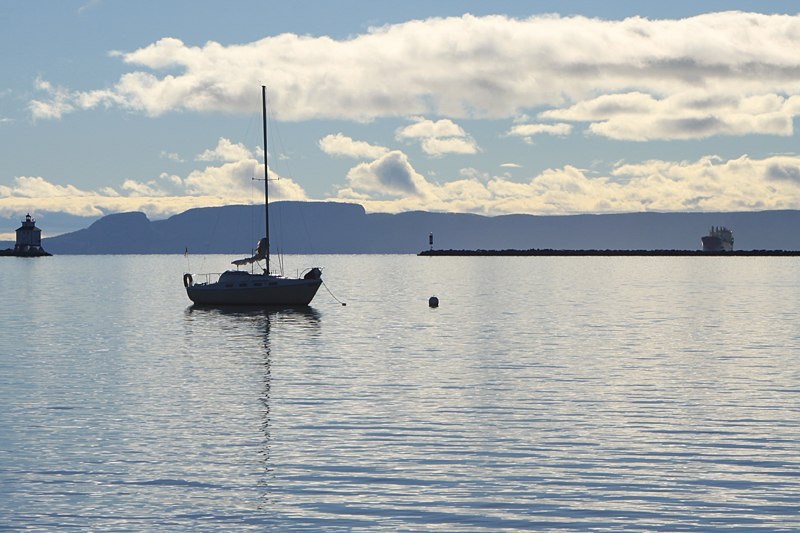In a few decades, Lake Superior might resemble an entirely different lake.
The lake has shown to be warming at a rate that exceeds any other major lake in the world, and according to one Lakehead University Geography assistant professor, that might mean an entirely different winter landscape.
“One projection is that within 30 years ice-free conditions will be normal on Lake Superior,” Adam Cornwell said. “It will be a permanent shift to a longer summer stratified season and warmer lake temperatures.”
While all of the Great Lakes are warming, the effects are the most dramatic in Lake Superior. Lake Superior has the highest warming rate of any freshwater lake in the world, and is warming at a rate that exceeds the Antarctic and Arctic ice caps.
Studies have shown over the past 30 years the average temperature of the lake has increased by just over three degrees Celsius.
While that may not seem like much, it can have a significant impact upon the ecosystem.
Timothy Cline, a former aquatic research technician at the University of Wisconsin, studied the different effects of the warmer water on fish.
Cline explained each species of fish has developed their optimal conditions, with water temperature being a significant factor.
“The lake is warming up earlier in the year, and cooling off later in the year,” Cline described.
“Many fish undergo thermal regulation where they choose their optimal temperature, and actually with warming there is a 10 to 20 per cent increase for many of these species in how many days they have their optimal growing temperature.
He found that one invasive species, the sea lamprey, benefits from the temperature shift and has resulted in their population thriving.
While he hasn’t seen any evidence as of yet, he is also cautious that if Lake Superior, always the coldest of the Great Lakes, reaches similar temperatures to the other lakes it might become a haven for other invasive species.
Cline is particularly concerned about the zebra mussel, which already calls some of the warmer Great Lakes home.
In addition, Cline’s research found that walleye have been beneficiaries of the warmer temperatures, as evidenced from hauls by commercial fishermen.
A decade ago walleye were a rare catch in the lake, but now they are becoming increasingly common.
He said walleye generally prefer warmer temperatures, and the increased temperatures have allowed them to expand their territory.
“Their habitat and the amount of time they achieve those optimal temperatures is increasing, and the actual area they reach those temperatures is expanding,” Cline explained. “They’re no longer restricted to shallow bays, they’re starting to get into some of the open lake habitats.”
This territorial increase has allowed the populations of certain species of fish to rise, but that comes with a downside.
Cline has already seen some evidence that a growing population puts strain upon the food supply, and some species of fish are not growing to their usual physical size.
“There has been some evidence in chinook salmon that they are reaching this population density that is preventing them from getting as large as they used to,” Cline said.
Part of Lake Superior’s warming rate can be attributed to the amount of solar radiation that Lake Superior receives due to its size.
Also, the warming creates a progressive effect as warmer water equals less time with ice coverage, which results in more solar radiation.
Generally, the lake temperature is regulated by the mixing of the warm surface water with the cooler bottom layer.
However, now the temperature zones are changing and there is less mixing close to the surface.
“Every year in the spring after the ice melts the surface of the lake gets very warm,” Cornwell explained.
“This water is less dense than the deep water in the lake and the lake becomes stratified. As the season becomes longer, and as the temperatures have been getting warmer in the region that gives the lake more of an opportunity to warm up and an extended period of time where it isn’t mixing with the colder water in the deeper lake.”
